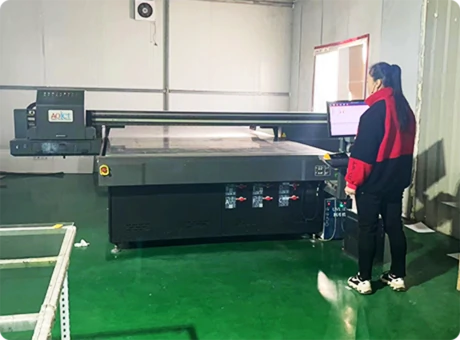The Beauty and Functionality of Monolithic Annealed Glass
Monolithic annealed glass is a type of flat glass that has undergone a specific thermal treatment process, known as annealing, which enhances its physical properties and performance characteristics. This glass is widely used in various applications due to its aesthetic appeal, strength, and versatility. In this article, we will explore the manufacturing process, benefits, applications, and environmental impacts of monolithic annealed glass.
Manufacturing Process
The production of monolithic annealed glass begins with raw materials, primarily silica sand, soda ash, and limestone, combined in precise proportions. These ingredients are melted together in a furnace at high temperatures, around 1,700 to 2,000 degrees Celsius. The molten glass is then formed into sheets using the float glass process, where it is floated on molten tin to create a smooth surface.
Once the desired thickness and size are achieved, the glass sheets enter the annealing lehr, a controlled heating and cooling chamber. In the lehr, the glass is gradually cooled at a specific rate to relieve internal stresses. This annealing process is critical as it ensures uniformity in thickness and improves the structural integrity of the glass. The end result is a strong, flat, and clear sheet of glass that is ready for various applications.
Benefits of Monolithic Annealed Glass
One of the primary advantages of monolithic annealed glass is its aesthetic quality. The glass provides excellent clarity and optical quality, making it ideal for applications where visibility is paramount. Its smooth surface can easily be coated or tinted, offering additional customization options for architects and designers.
Furthermore, monolithic annealed glass is cost-effective compared to tempered or laminated glass products. The annealing process allows for mass production, resulting in lower production costs that can be passed on to consumers. This affordability makes it accessible for a wide range of projects, from residential to commercial buildings.
In terms of performance, while monolithic annealed glass is not as strong as tempered glass, it is sufficiently robust for many applications. It can withstand impacts and weather conditions, making it suitable for windows, glass doors, and interior partitions. Additionally, its excellent thermal insulation properties enhance energy efficiency in buildings, contributing to a reduction in energy consumption and cost savings over time.
monolithic annealed glass
Applications
Monolithic annealed glass finds applications in various sectors, including construction, automotive, and interior design. In the construction industry, it is commonly used for windows, doors, glass facades, and partitions. The ability to produce large sheets also allows for expansive glass installations, providing a modern and open aesthetic to buildings.
In the automotive industry, monolithic annealed glass is utilized for windshield production and side windows. Its clarity and smooth finish ensure unobstructed visibility for drivers and passengers. Moreover, it can be fabricated to meet specific safety and regulatory standards, ensuring compliance without compromising on style.
Within interior design, monolithic annealed glass is often employed in furniture designs, such as tabletops and shelves, where elegance meets practicality. Its versatility also allows it to be used in artistic applications, like glass art installations and decorative panels that enhance interior aesthetics.
Environmental Impact
Despite its advantages, the environmental impact of monolithic annealed glass manufacturing cannot be overlooked. The glass production process is energy-intensive, contributing to greenhouse gas emissions. However, many manufacturers are now focusing on sustainable practices, such as using recycled glass and implementing energy-efficient technologies in production.
Recycling glass can significantly reduce the environmental footprint associated with its production, as it requires less energy than creating new glass from raw materials. Additionally, the durability and longevity of monolithic annealed glass contribute to its sustainability, as fewer replacements are needed over time.
Conclusion
Monolithic annealed glass is a remarkable material, seamlessly combining beauty, functionality, and affordability. Its extensive applications across various industries highlight its versatility and significance in modern design and architecture. As the demand for sustainable materials grows, the industry continues to evolve, striving towards greener solutions that benefit both consumers and the environment. Embracing monolithic annealed glass not only enhances the aesthetic appeal of spaces but also promotes a more sustainable future.
 Afrikaans
Afrikaans  Albanian
Albanian  Amharic
Amharic  Arabic
Arabic  Armenian
Armenian  Azerbaijani
Azerbaijani  Basque
Basque  Belarusian
Belarusian  Bengali
Bengali  Bosnian
Bosnian  Bulgarian
Bulgarian  Catalan
Catalan  Cebuano
Cebuano  Corsican
Corsican  Croatian
Croatian  Czech
Czech  Danish
Danish  Dutch
Dutch  English
English  Esperanto
Esperanto  Estonian
Estonian  Finnish
Finnish  French
French  Frisian
Frisian  Galician
Galician  Georgian
Georgian  German
German  Greek
Greek  Gujarati
Gujarati  Haitian Creole
Haitian Creole  hausa
hausa  hawaiian
hawaiian  Hebrew
Hebrew  Hindi
Hindi  Miao
Miao  Hungarian
Hungarian  Icelandic
Icelandic  igbo
igbo  Indonesian
Indonesian  irish
irish  Italian
Italian  Japanese
Japanese  Javanese
Javanese  Kannada
Kannada  kazakh
kazakh  Khmer
Khmer  Rwandese
Rwandese  Korean
Korean  Kurdish
Kurdish  Kyrgyz
Kyrgyz  Lao
Lao  Latin
Latin  Latvian
Latvian  Lithuanian
Lithuanian  Luxembourgish
Luxembourgish  Macedonian
Macedonian  Malgashi
Malgashi  Malay
Malay  Malayalam
Malayalam  Maltese
Maltese  Maori
Maori  Marathi
Marathi  Mongolian
Mongolian  Myanmar
Myanmar  Nepali
Nepali  Norwegian
Norwegian  Norwegian
Norwegian  Occitan
Occitan  Pashto
Pashto  Persian
Persian  Polish
Polish  Portuguese
Portuguese  Punjabi
Punjabi  Romanian
Romanian  Russian
Russian  Samoan
Samoan  Scottish Gaelic
Scottish Gaelic  Serbian
Serbian  Sesotho
Sesotho  Shona
Shona  Sindhi
Sindhi  Sinhala
Sinhala  Slovak
Slovak  Slovenian
Slovenian  Somali
Somali  Spanish
Spanish  Sundanese
Sundanese  Swahili
Swahili  Swedish
Swedish  Tagalog
Tagalog  Tajik
Tajik  Tamil
Tamil  Tatar
Tatar  Telugu
Telugu  Thai
Thai  Turkish
Turkish  Turkmen
Turkmen  Ukrainian
Ukrainian  Urdu
Urdu  Uighur
Uighur  Uzbek
Uzbek  Vietnamese
Vietnamese  Welsh
Welsh  Bantu
Bantu  Yiddish
Yiddish  Yoruba
Yoruba  Zulu
Zulu 

